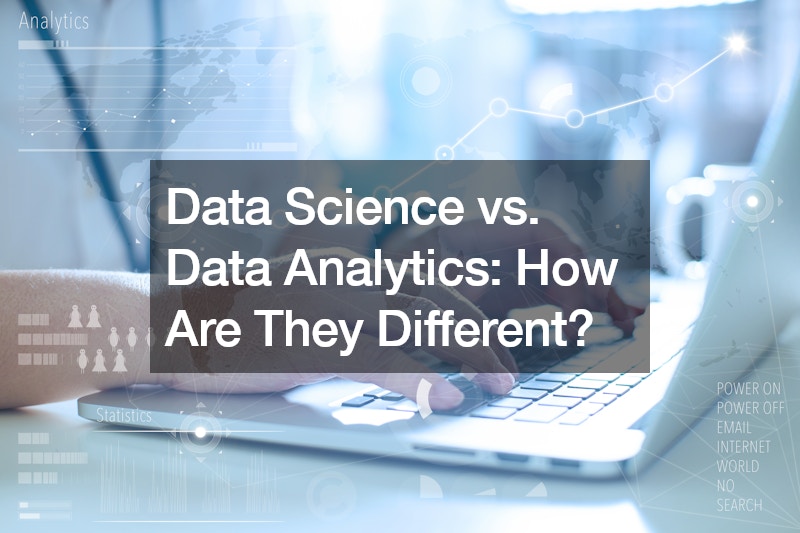In the world of data-driven decision-making, terms like “data science” and “data analytics” are often used interchangeably, but they represent distinct fields with unique focuses and applications. Understanding the disparities between these two domains is crucial for individuals considering a career in either field and for organizations aiming to leverage data effectively. Let’s delve into the variances between data science and data analytics and explore their respective roles.
Data Science: Unveiling Patterns and Predictions
Data science serves as the overarching umbrella term encompassing a broad spectrum of tasks related to extracting insights from large datasets, training machine learning models, and deploying AI applications. Data scientists, the professionals in this domain, engage in a comprehensive process known as the data science lifecycle.
The data science lifecycle comprises several phases, starting with identifying a problem or opportunity. Next comes data mining, where relevant data is extracted from vast datasets. This data is then cleaned to rectify errors and redundancies, followed by exploration and analysis to derive meaningful insights. Feature engineering is employed to extract specific details from the data, leading to predictive modeling to forecast future outcomes. Finally, data visualization techniques are used to represent data points graphically for enhanced understanding.
A key aspect of data science is its iterative nature, where hypotheses are formed and tested to achieve desired outcomes. Data scientists utilize advanced analytical techniques and programming languages like Python and R, along with big data platforms such as Hadoop or Apache Spark, to extract valuable insights from complex datasets.
Data Analytics: Interpreting Existing Data
Data analytics, on the other hand, is a specialized domain within data science that focuses on querying, interpreting, and visualizing datasets to derive actionable insights. Data analysts, the professionals in this field, play a vital role in conceptualizing existing datasets and making informed decisions based on available data.
Data analytics encompasses various approaches, including predictive analytics, prescriptive analytics, diagnostic analytics, and descriptive analytics. Predictive analytics identifies trends, correlations, and causation within datasets to forecast future outcomes. Prescriptive analytics predicts likely outcomes and provides decision recommendations, while diagnostic analytics helps pinpoint the reasons behind specific events. Descriptive analytics evaluates the qualities and quantities of a dataset, offering insights into past and present trends.
Data analysts rely on statistical tools and techniques to interpret existing data and offer actionable insights. Proficiency in database management, statistical analysis, and data visualization is essential for individuals pursuing a career in data analytics. While data analytics is more focused on interpreting existing data, data science involves a broader scope, encompassing data collection, analysis, and predictive modeling.
Skill Requirements
To excel in data science and data analytics roles, individuals require a diverse set of skills and competencies. Firstly, proficiency in programming languages is essential, particularly Python and R, which are widely used for data manipulation, analysis, and visualization. Additionally, familiarity with SQL for database querying and management is valuable for handling large datasets efficiently.
Moreover, a strong foundation in statistical analysis is crucial for interpreting data and drawing meaningful insights. Skills in hypothesis testing, regression analysis, and probability theory enable professionals to uncover patterns and trends within datasets accurately.
Furthermore, domain knowledge plays a significant role, as understanding the context and intricacies of specific industries or fields enhances the relevance and applicability of data analysis. Whether it’s finance, healthcare, marketing, or manufacturing, domain expertise enables data scientists and analysts to tailor their analyses to address industry-specific challenges and opportunities.
Overall, a combination of technical proficiency in programming and statistical analysis, coupled with domain knowledge, forms the cornerstone of success in data science and data analytics roles. Continual learning and adaptation to evolving tools and techniques are also essential to stay competitive in these dynamic fields.
Data Collection: A Common Thread
Data collection serves as a common thread weaving through the realms of data science and data analytics, underpinning their entire workflow and decision-making processes. Irrespective of the specific tasks or objectives pursued within each discipline, the quality and relevance of the collected data profoundly influence the outcomes.
In both data science and data analytics, the process of data collection involves sourcing raw data from diverse channels and repositories. This data can originate from structured databases, unstructured sources like social media feeds, or even IoT devices and sensors generating real-time data streams. The breadth and depth of data collection efforts are crucial determinants of the subsequent analyses’ accuracy and insights’ depth.
Moreover, data collection encompasses not only acquiring data but also ensuring its cleanliness, integrity, and compliance with relevant standards and regulations. Data scientists and analysts must meticulously curate and preprocess the collected data to mitigate biases, errors, and inconsistencies, thereby laying a robust foundation for meaningful analysis and interpretation.
In conclusion, while data science and data analytics are interconnected fields, they represent distinct approaches to leveraging data for decision-making purposes. Data science focuses on uncovering patterns, predicting future outcomes, and deploying AI applications, while data analytics interprets existing data to derive actionable insights. Both domains play integral roles in harnessing the power of data to drive organizational success and innovation.
.







